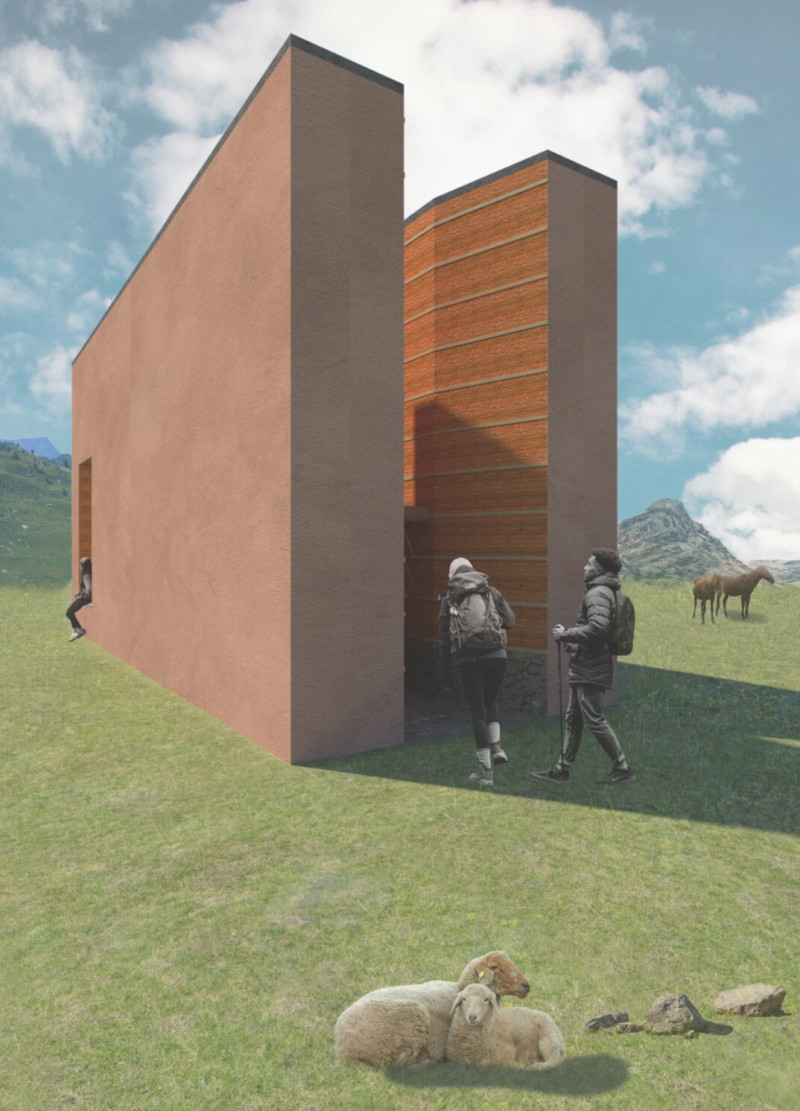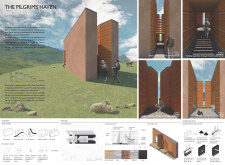5 key facts about this project
The Pilgrims Haven is an architectural pavilion located along the Camino de Santiago, a well-known pilgrimage route leading to the shrine of St. James the Great in northwest Spain. Positioned between Saint Jean Pied de Port and Roncesvalles, the structure serves as a resting place for travelers, giving them a moment of respite and reflection during their journey. The design concept prioritizes creating a peaceful environment that helps rejuvenate weary visitors.
Design Concept
The main idea behind Pilgrims Haven is to offer a tranquil space for those on pilgrimage. The design focuses on engaging multiple senses, including sight, sound, and touch, to create a calm atmosphere. This thoughtful approach makes the pavilion more than just a place to rest; it also serves as a retreat for personal reflection, allowing travelers to take a break and reconnect with their purpose.
Spatial Organization
The pavilion's layout consists of clear zones, each designed for a specific experience. The first zone, called Reveal, introduces visitors to a space that reduces chaos, setting the stage for relaxation. The next zone, Suspense, helps individuals absorb their surroundings and find calmness. Moving forward, the Intimate zone features carefully arranged light and symmetry that enhance moments of spiritual reflection. Finally, the Revive zone encourages a deep connection with nature, inviting travelers to recharge their energy.
Materiality
Materials play a vital role in shaping the identity of the pavilion. Rammed earth is used for its natural qualities and thermal properties, allowing the structure to blend in with the landscape. Stone layers provide both support and visual interest, while lime plaster finishes ensure the building is durable and aesthetically pleasing. Wooden frameworks and logs offer essential structural support, further linking the pavilion to its environment.
Natural light flows through strategic openings, casting varied shadows across the interior. This design detail creates an inviting atmosphere and encourages quiet contemplation from those who seek shelter within its walls.



















































